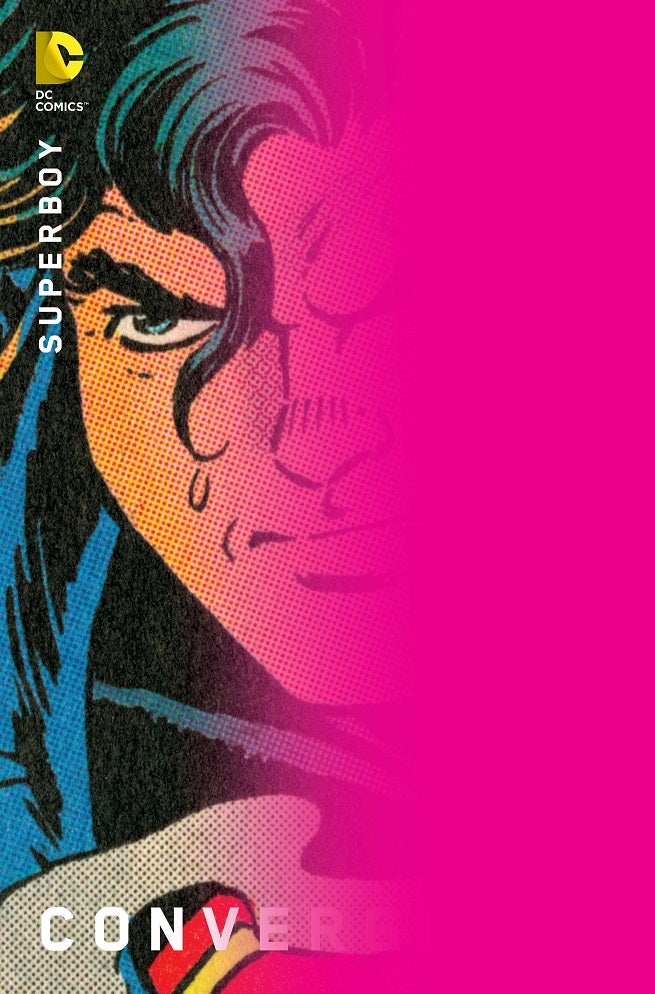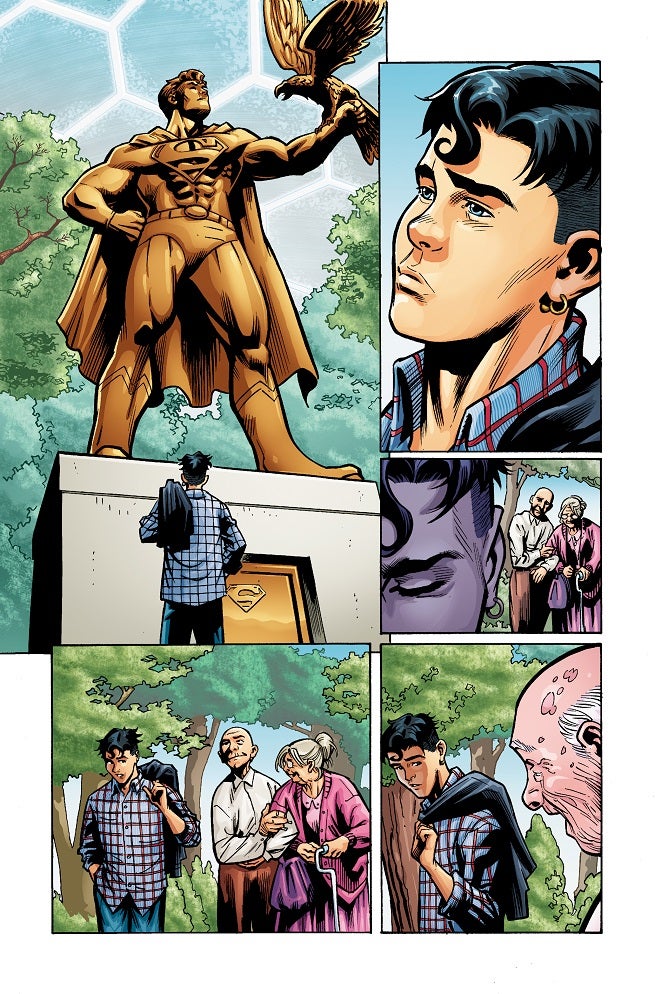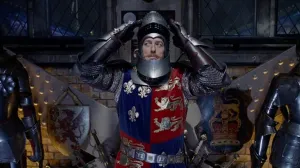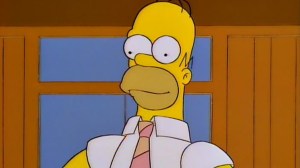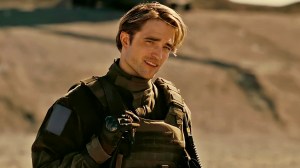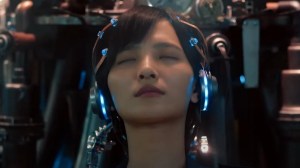Videos by ComicBook.com
The character, like many of the heroes of the Week Two titles during Convergence, will face off against a threat presented by invading heroes from the Kingdom Come universe…and the creative team behind it — writer Fabian Nicieza and artists Karl Moline and José Marzan, Jr. — all have slightly different backgrounds when it comes to comics — and Superman comics, in particular — in the ’90s.
Nicieza, Moline and Marzan joined ComicBook.com to talk about the title, the first issue of which will be on the stands April 15.
What was your first reaction when they came to you about Convergence? Getting pitched the concept before all the rumors started must have been a little crazy.
Karl Moline: It was definitely surreal. I was a superfan back in the day long before drawing comics professionally. This version of Superboy was my favorite of the new supermen that emerged following Kal-El’s death. I was also a huge fan of the Kingdom Come storyline. There were some very big shoes to fill. So this was a dream job, and a challenge from the beginning.
Karl, your career in comics actually started after the period portrayed in this book was already over. Did it require a lot of research to go back and get people on-model?
Moline: I try to do research no matter what the subject matter is. I probably did more research on the armfolds of leather jackets, but I did my fair share of Metropolis, circa 1992 as well. But I did live through the 90’s, so I did have plenty of mental visuals to pull from.
How much of a primer/series bible did you need for this one? It strikes me that around the mid-’90s, Superboy’s status quo was changing pretty regularly.
Fabian Nicieza: The main Convergence series had a very elaborate bible prepared, but the “side series” really boiled down to a much more simple structure: our heroes have to reclaim their confidence and focus on their ability to protect their little slice of sanity in a now insane world. To what lengths will they go to in order to do that?
José, you were part of some really memorable, iconic work on the Superman titles around this time and for and likely many other readers my age, the first inker I recognized by name. What is it like to be returning to that realm?
José Marzan, Jr.: It’s been fun to revisit some of the characters I worked in back when I was regularly inking Superman, as well as a few that I admired but never had an opportunity to work on like the Kingdom Come Superman. The Superman characters (and especially the 90’s versions) are like old friends and family, and I’m happy to contribute to their ongoing legacy.
Nicieza: I can’t explain too much for fear of stepping on invisible toes, but various characters and cities from specific points in DC’s continuity have been torn out of time and exist on a separate world. The Gotham City Superboy has lived in for a year takes place in a time period when Superman had not yet returned after dying in battle with Doomsday.
Obviously with Superman missing, it plunges Superboy and Steel almost right back to the Reign of the Supermen. Might we see some of the other characters from that era of the publishing history pop up in your book?
Nicieza: The focus of the story is on Superboy and his supporting cast and the conflict they come into with the Kingdom Come characters.
There aren’t that many people who have had the opportunity to write characters from the Kingdom Come universe, but you were a professional by the time that book was out, and a very successful one. Do you have a lot of affection for that story?
Nicieza: Loved that series and everything Mark and Alex had to say about the characters and the course of comics in general. The themes of that series play a very important part in this two-part Superboy story.
Kingdom ComeNicieza: That’s a great question and I agree with you about the challenges of using those characters, but I think that because this story plays perfectly into the themes of the original series, that we are able to weave the philosophy and character conflict with the action. I think it works and I hope the readers will, too.
This character obviously got kind of radically reinvented around the time he started to go by “Kon-El.” Are you going to be dealing with any of the turmoil in his regular, non-Convergence headspace?
Nicieza: I think the turmoil for the character is that when the Convergence doming happened to him, he was very new to being Superboy (and wanting to be considered SuperMAN). He’d barely had time to grow into who he wanted to be before that status quo was turned upside down. Now he has a lot of insecurities about himself and how people perceive him, and very much wants the chance to prove himself. But the conflict is, maybe the best way to prove he deserves the title Superman is by being more of a man and less super…?
Are there any other characters who will play a role in the Superboy mini?
Nicieza: Original supporting characters from his series, Dubbilex and Serling Roquette are in the mini.
Obviously you’ve done a lot of work on young heroes over the years, but you’re not associated with Superboy. What was the appeal of this character in this setting?
Nicieza: From New Warriors to X-Force to Robin, I have always enjoyed writing teens who are on the cusp of adulthood. Their angst, arrogance and insecurities are great fodder for character conflict. Karl Kesel and Tom Grummett created a wonderful mix in Kon-El. Cockiness and loneliness, courage and fear, the character was unlikeable and lovable at the same time.
That is the place we find Kon when we start our series and it only percolates from there!
Do you approach this book any differently, in terms of trying to bring a sensibility to the characters that matches the publishing era, or do you think it’s better to just depict those characters with today’s sensibilities intact?
Moline: I really enjoyed the character for what he was back then, and I wanted to make sure I was faithful to that. But at the same time, I wanted him to be the kind of person that everyone could fall in love with again. So I attempted to make him handsome and confident (and even a little vulnerable) in a way that would translate with today’s reader.
Marzan: Well, I approached the job the same way I’ve always approached an inking job: thinking of what’s best for job and the penciller’s approach. I wasn’t asked to approach the assignment with a 1990’s or 20teens feel; just to do it my way, and make it look good. Our marching orders were to make good comics.
I don’t think it’s necessary to make books like those in the Convergence storyline mimic comics as they were done in the 1990s, 60’s 50’s or any other point in time. The readers are smart, they don’t expect Superman’s origin story to always be drawn in the style of Joe Shuster circa 1938.


